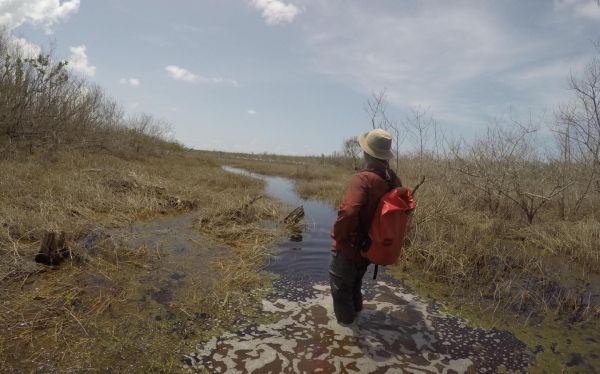A new paper published by an East Carolina University researcher in the Department of Coastal Studies shines light on the effect human-made infrastructure and natural topography has on coastal wetlands after major storm events.
In partnership with NASA and Florida International University, the study, led by assistant professor David Lagomasino, was published in the July edition of Nature Communications.
The study focused on the effects of Hurricane Irma, which struck Florida in 2017, and the damage it caused to the state’s mangrove forests. The research team found that the forests suffered unparalleled dieback after the major hurricane.
Mangrove forests are often damaged after hurricanes, but Lagomasino said forests in Florida have shown great resiliency in the past due to their structure, position and species composition. After Hurricane Irma, the forests did not rebound at the same rate. Nearly 11,000 hectares — a space the size of more than 24,000 football fields — showed evidence of complete dieback following the storm.
Read more at East Carolina University
Image: Despite resilient grow back in the past, Lagomasino and his research team estimate that nearly 11,000 hectares of mangrove forest, about 27,000 acres, failed to regrow at their previous levels after Hurricane Irma. (Credit: David Lagomasino/ECU)


